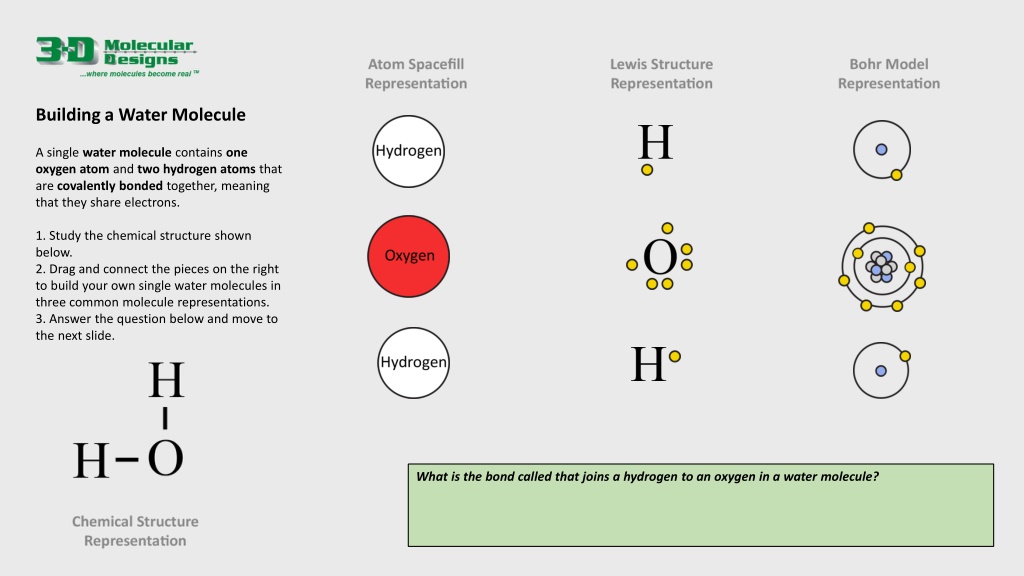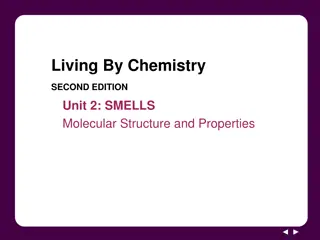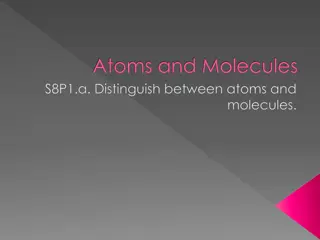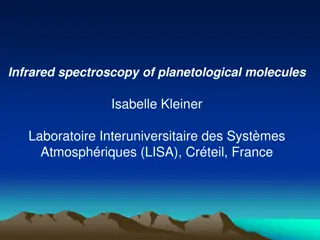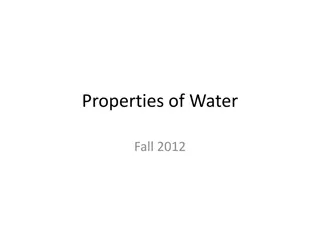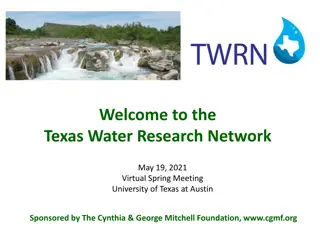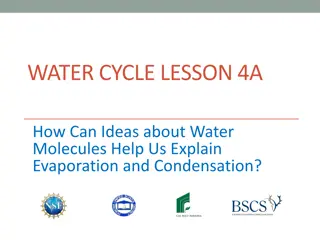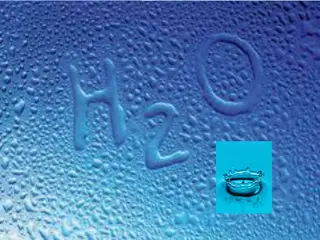Understanding Water Molecules and Their Interactions
Explore the structure of a water molecule, its polar nature, and interactions with other molecules. Learn about the three states of water and why solid water is less dense than liquid water. Engage in activity questions to deepen understanding.
Download Presentation

Please find below an Image/Link to download the presentation.
The content on the website is provided AS IS for your information and personal use only. It may not be sold, licensed, or shared on other websites without obtaining consent from the author. Download presentation by click this link. If you encounter any issues during the download, it is possible that the publisher has removed the file from their server.
E N D
Presentation Transcript
Building a Water Molecule A single water molecule contains one oxygen atom and two hydrogen atoms that are covalently bonded together, meaning that they share electrons. 1. Study the chemical structure shown below. 2. Drag and connect the pieces on the right to build your own single water molecules in three common molecule representations. 3. Answer the question below and move to the next slide. What is the bond called that joins a hydrogen to an oxygen in a water molecule?
The Polar Nature of Water The shared electrons in a water molecule spend more time near the oxygen atom and less near the two hydrogen atoms, resulting in slightly positive and slightly negative regions. This impacts how they interact with other molecules, forming hydrogen bonds when they get close to an opposite charge. 1. Study how two water molecules interact using the image shown below. 2. Drag the water molecule shown to the right to demonstrate how water molecules might interact with the other common molecules.
The Three States of Matter Matter can exist in three states, solid, liquid and gas. As a gas (above 100 C), water molecules barely form hydrogen bonds with each other, and are very spread out. As a liquid (between 0 C and 100 C), water molecules are very close to each other and form and break hydrogen bonds quickly. As a solid (below 0 C), water molecules form permanent hydrogen bonds that crystalize into a hexagonal lattice structure. 1. Study the various chemical drawings shown above and to the right. 2. Drag and rotate the water molecule shown to the right to create three illustrations of the three states of matter. 3. Answer the question to the right and move to the next slide. Why is solid water (ice) less dense than liquid water?
Activity Questions How many other molecules can a single water molecule interact with?
